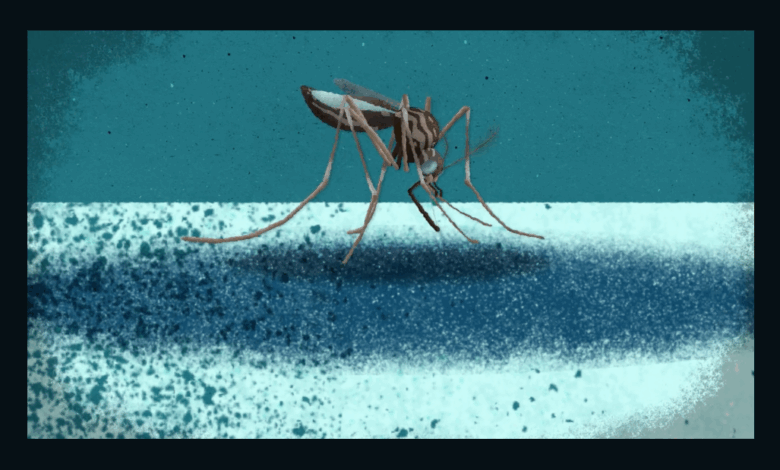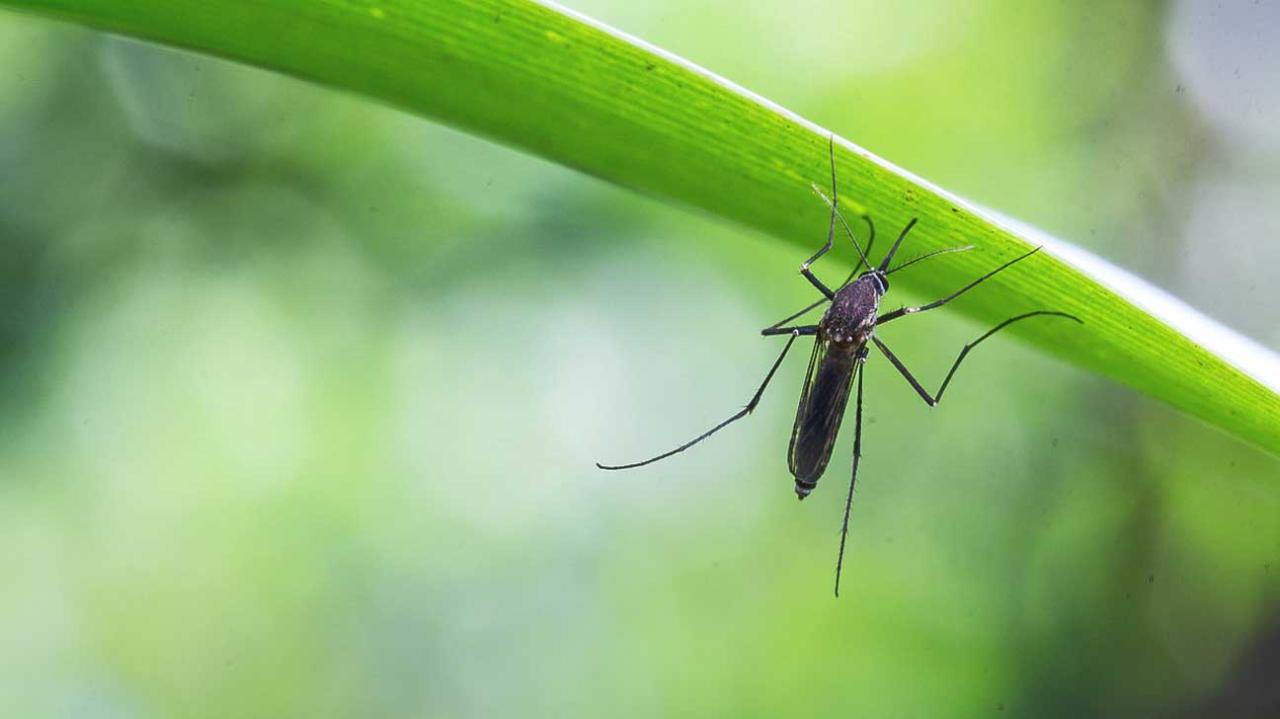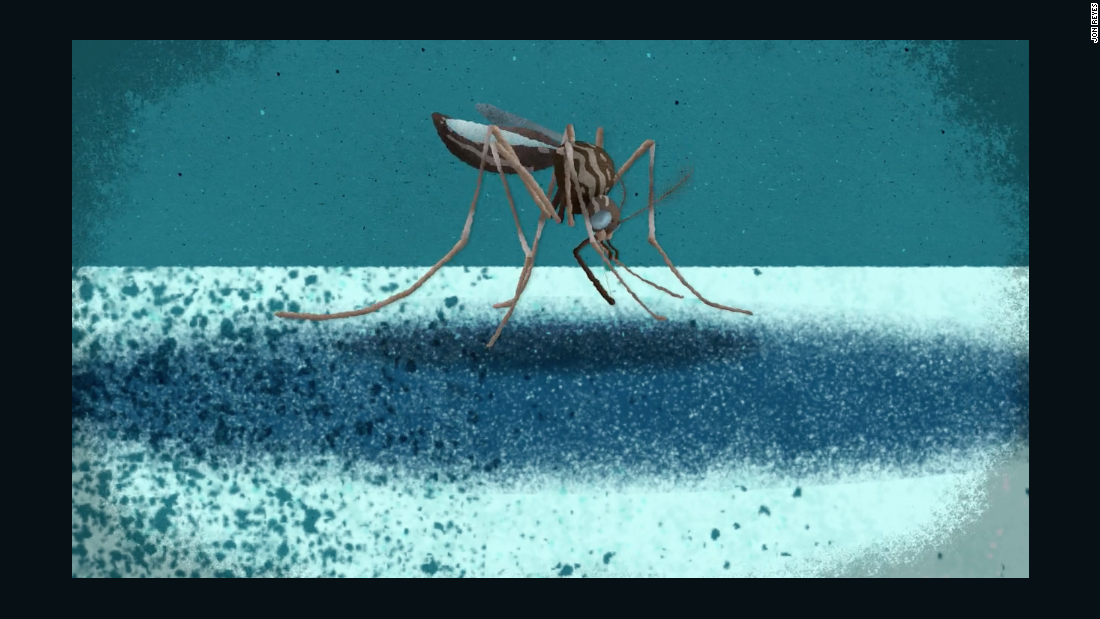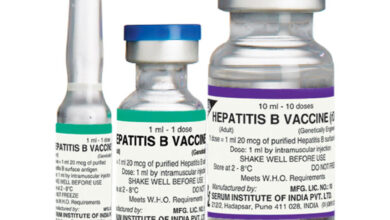
CDC reveals spread of mosquitoes able to carry Zika, highlighting a critical public health concern. This alarming news underscores the urgent need for proactive measures to combat the virus’s expansion. We’ll explore the science behind Zika transmission, the CDC’s response, and the potential impact on global health.
The Zika virus, originating in Africa, has spread globally, causing significant health issues. Key characteristics include its transmission via certain mosquito species and the potential for severe complications like microcephaly in newborns. Understanding the geographical spread and the specific mosquito vectors is essential for developing effective prevention strategies.
Introduction to Zika Virus
The Zika virus, a mosquito-borne flavivirus, has emerged as a significant public health concern globally. Its spread, primarily through the bite of infected Aedes mosquitoes, has resulted in outbreaks and health consequences in various regions. Understanding the virus’s origins, transmission, and impact is crucial for effective prevention and control strategies.The Zika virus, belonging to the Flaviviridae family, is characterized by a single-stranded RNA genome.
Its transmission primarily occurs through the bite of infected Aedes mosquitoes, including Aedes aegypti and Aedes albopictus. These mosquitoes are prevalent in tropical and subtropical regions, and are known vectors for other diseases.
Health Consequences of Zika Virus Infection
Zika virus infection often presents with mild symptoms, resembling a mild flu, including fever, rash, joint pain, and conjunctivitis. However, severe neurological complications can occur, particularly in pregnant women. Infection during pregnancy can lead to congenital Zika syndrome, a condition affecting the developing fetus. A notable consequence is microcephaly, a condition characterized by an abnormally small head size, often associated with incomplete brain development.
Other potential neurological problems associated with congenital Zika syndrome can include developmental delays, visual impairments, and hearing loss.
Geographical Distribution of Zika Virus Outbreaks
The Zika virus has been reported in numerous countries and territories worldwide. Its prevalence is concentrated in tropical and subtropical regions, where the Aedes mosquito vectors thrive.
The CDC’s recent report on the expanding range of Zika-carrying mosquitos is definitely a cause for concern. While worrying about mosquito-borne illnesses is important, it’s encouraging to see advancements in areas like allergy treatment. A new patch for peanut allergies, as detailed in this recent study, patch for peanut allergies shows promise , offers a potential solution for a significant health issue.
Still, the ongoing spread of Zika-carrying mosquitos remains a critical public health issue that demands continued attention and research.
| Region | Countries/Territories |
|---|---|
| Africa | Nigeria, Uganda, Senegal, etc. |
| Americas | Brazil, Colombia, Venezuela, Mexico, etc. |
| Asia | Philippines, India, Thailand, etc. |
| Oceania | French Polynesia, New Caledonia, etc. |
Note: This table provides a brief overview and is not exhaustive. Ongoing surveillance and reporting are crucial to track the virus’s spread and inform public health responses. Specific locations and outbreaks are subject to change as epidemiological data is updated.
Mosquito Species and Vectors

The spread of Zika virus hinges critically on the mosquito vectors that transmit the infection. Understanding the specific species involved, their life cycles, and their geographic distribution is paramount to developing effective control strategies. This knowledge allows for targeted interventions and informed public health measures.
Specific Mosquito Species Implicated
The primary mosquito species implicated in Zika virus transmission are
- Aedes aegypti* and
- Aedes albopictus*. These mosquitoes are both vectors of several arboviruses, including dengue and chikungunya, in addition to Zika. They share similar characteristics in their biology and behavior, making them significant public health concerns.
Life Cycle of Zika Vectors
The life cycle ofAedes* mosquitoes is typically complete within 10-14 days, beginning with the egg stage. Eggs are laid in water-holding containers, which can range from discarded tires and flowerpots to even small puddles. The larvae develop in the water, feeding on organic matter. Pupae, the intermediate stage, are non-feeding, and then the adult mosquito emerges from the pupa.
The adult female mosquito then feeds on blood to develop eggs, completing the cycle. The transmission of Zika occurs during the blood-feeding stage of the adult female.
Biting Habits and Geographic Distribution
- Aedes aegypti* is known for its aggressive daytime biting habits. It prefers to rest in close proximity to humans and is often found in urban environments.
- Aedes albopictus*, in contrast, has a broader biting activity pattern, occurring both during the day and at night. Its adaptability allows it to thrive in a wider range of environments, including rural areas. Both species are found in tropical and subtropical regions globally, with
- Aedes aegypti* exhibiting a stronger preference for urban areas.
Comparison Table of Mosquito Distribution
| Mosquito Species | Africa | Asia | Americas | Oceania | Europe |
|---|---|---|---|---|---|
| *Aedes aegypti* | Widely distributed | Widely distributed | Widely distributed, particularly in urban areas | Present in some island nations | Sporadic occurrences |
| *Aedes albopictus* | Present in some regions | Widely distributed | Widely distributed, including urban and rural areas | Present in some island nations | Present in some countries |
Environmental Factors Influencing Mosquito Breeding
Environmental factors play a significant role in the breeding and proliferation ofAedes* mosquitoes. Standing water, regardless of its source, is essential for larval development. Climate conditions, particularly temperature and rainfall patterns, influence the mosquito’s life cycle. The presence of suitable breeding sites, coupled with conducive environmental conditions, leads to increased mosquito populations. Human activities, such as improper waste disposal and inadequate sanitation, often contribute to the creation of breeding grounds.
For instance, discarded tires or containers left outside provide ideal habitats for larval development.
CDC’s Announcement and Public Health Response
The recent CDC announcement regarding the expanded range of Zika-carrying mosquito species underscores the critical need for proactive public health measures. This heightened awareness necessitates a comprehensive understanding of the implications and the strategies employed to mitigate the risks associated with the virus’s potential spread. The CDC’s response isn’t just about reacting to the current situation; it’s about building a resilient public health infrastructure capable of handling future outbreaks.The CDC’s announcement signifies a crucial shift in public health preparedness.
The CDC’s recent announcement about the spread of Zika-carrying mosquitoes is a serious concern, highlighting the importance of preventative measures. But beyond the immediate health risks, societal factors like the way we define masculinity play a crucial role in how we approach and address these issues. For a deeper dive into how societal expectations around masculinity can negatively impact everyone’s health, check out this insightful article: man enough why masculinity is a risk to everyones health.
Ultimately, understanding these complex interconnections is key to effectively combating the spread of diseases like Zika.
It signals a move from localized responses to a broader, more strategic approach that considers the dynamic nature of disease transmission. This proactive stance is vital in minimizing the impact of emerging health threats and underscores the importance of vigilance in the face of evolving epidemiological patterns.
Official CDC Statement Summary
The CDC’s official statement detailed the identification of new mosquito species capable of transmitting the Zika virus. This expansion of the vector range significantly broadens the geographical areas at risk of Zika infection. The announcement emphasized the potential for wider community transmission in previously unaffected regions. It also highlighted the importance of increased surveillance and preventative measures.
Significance of the CDC Announcement
The CDC’s announcement is significant because it shifts the focus from containment to broader preventive measures. The identification of new vector species highlights the evolving nature of disease transmission and the need for adaptable public health strategies. This proactive approach allows for more effective public health campaigns and resource allocation. The implications extend beyond the immediate threat, influencing future disease surveillance and response protocols.
Strategies to Combat Zika Spread
The CDC’s response encompasses a multi-pronged approach. Increased surveillance in affected areas, encompassing the monitoring of mosquito populations, vector control initiatives, and disease detection systems, are key elements of this strategy. Public awareness campaigns and community engagement play a crucial role in disseminating information about prevention. These strategies include educating the public about protective measures and providing support for affected communities.
Preventative Measures Advised by the CDC
The CDC emphasizes that personal protective measures are crucial in mitigating the risk of Zika virus infection.
- Protective Clothing: Wearing long sleeves and pants in areas with Zika-carrying mosquitoes can significantly reduce the risk of mosquito bites.
- Insect Repellents: Applying EPA-registered insect repellents containing DEET, picaridin, or IR3535, as directed, is vital in repelling mosquitoes.
- Mosquito Control Measures: Eliminating standing water around homes and communities helps disrupt mosquito breeding sites. This simple action can drastically reduce the local mosquito population.
- Travel Precautions: Individuals traveling to regions with Zika transmission should consult with their healthcare providers and take necessary precautions to avoid mosquito bites, especially during peak mosquito activity.
- Sexual Transmission Prevention: Individuals who have traveled to or reside in areas with Zika transmission should take precautions to prevent sexual transmission of the virus to partners.
Potential Impact and Implications
The recent announcement by the CDC regarding the expansion of Zika-carrying mosquito ranges necessitates a thorough examination of the potential consequences for human populations. The implications extend far beyond the immediate health risks, impacting social structures, economies, and the long-term resilience of public health systems. Understanding these multifaceted repercussions is crucial for developing effective mitigation strategies.The spread of Zika-carrying mosquitoes into new territories poses significant threats to human populations, especially pregnant women and their unborn children.
The virus can cause severe birth defects, including microcephaly. The increased geographical reach of these mosquitoes necessitates proactive public health measures and community engagement to effectively control the spread of the virus.
Consequences for Human Populations
The expanded range of Zika-carrying mosquitoes has the potential to significantly impact human populations, especially pregnant women and fetuses. Zika virus infection during pregnancy can lead to severe birth defects like microcephaly, characterized by an abnormally small head size, which can result in developmental problems. This is particularly concerning in regions where Zika virus has not previously been prevalent.
The risk of infection and its consequences will vary based on individual factors such as immune response and environmental conditions. The increased prevalence of Zika in new areas will likely strain existing healthcare systems and resources, requiring immediate preparation.
Social and Economic Implications
Zika outbreaks can have profound social and economic consequences. The fear of infection can lead to social disruption, impacting tourism and economic activities in affected regions. The need for extensive healthcare resources to treat infected individuals and their families will place a strain on healthcare systems, potentially diverting resources from other essential services. The financial burden on individuals and families facing the consequences of Zika infection can be substantial.
For example, the cost of medical care for a child with microcephaly is likely to be significant over the long term. The economic impact extends to lost productivity and potential disruptions to educational systems.
Long-Term Effects on Public Health Systems
The prolonged effects of Zika outbreaks on public health systems are considerable. The need for enhanced surveillance, vector control programs, and increased access to testing and treatment will place a significant burden on public health resources. The potential for long-term complications in infected individuals necessitates ongoing monitoring and support systems. Developing effective strategies for long-term care and support for individuals affected by Zika is vital for the long-term well-being of communities.
Public health systems may need to adjust their strategies and allocate more resources to combat Zika’s potential long-term impact.
Comparison with Other Mosquito-Borne Diseases
The Zika virus shares similarities and differences with other mosquito-borne diseases, such as dengue and chikungunya. All three are transmitted by the same species of mosquitoes, highlighting the importance of integrated vector control strategies. However, the specific clinical manifestations and long-term health effects differ. While Zika primarily affects pregnant women and fetuses, dengue and chikungunya can cause severe acute illness in a broader range of populations.
Understanding the similarities and differences in clinical presentations is crucial for developing effective public health interventions. The varying impacts of these diseases on individuals and communities require tailored responses.
Impact on Existing Control Measures
The expanded mosquito range might impact the effectiveness of existing control measures. Control strategies that were effective in previously endemic areas may need adaptation or refinement for new geographic regions. Factors such as climate change, altered habitats, and the emergence of resistant mosquito populations will influence the success of current control measures. For instance, if mosquito populations in a new region are resistant to certain insecticides, current methods may need to be modified or supplemented with alternative strategies.
Effective vector control relies on an understanding of the local mosquito ecology and adaptation to new challenges.
Prevention and Control Strategies: Cdc Reveals Spread Of Mosquitoes Able To Carry Zika
Combating the spread of Zika virus necessitates a multi-pronged approach encompassing individual precautions, environmental modifications, and public health awareness campaigns. Effective strategies must target both mosquito breeding grounds and individual exposure to infected mosquitoes. Understanding the nuances of mosquito biology and behavior is crucial for the development of robust preventative measures.
Mosquito Breeding Prevention
Stopping mosquito breeding begins with identifying and eliminating potential breeding sites. Mosquitoes thrive in stagnant water, whether it’s in discarded tires, flowerpots, or even small puddles. Regularly emptying and cleaning containers that collect water is a vital first step. Furthermore, ensuring proper drainage in areas prone to water accumulation can significantly reduce mosquito populations. Implementing these measures reduces the mosquito breeding habitat, thereby reducing the risk of Zika transmission.
Personal Protective Measures
Protecting oneself from mosquito bites is paramount in preventing Zika infection. Consistent use of personal protective measures is crucial in limiting exposure to infected mosquitoes. These measures are essential to minimize the risk of transmission.
| Protective Measure | Description |
|---|---|
| Insect Repellent | Using insect repellents containing DEET, picaridin, or oil of lemon eucalyptus, following the product instructions carefully. |
| Protective Clothing | Wearing long sleeves and pants, especially during peak mosquito activity times, can significantly reduce skin exposure. |
| Mosquito Nets | Using mosquito nets, particularly when sleeping outdoors, can provide a physical barrier against mosquito bites. |
| Repellents on Children | Using child-safe repellents, carefully following instructions, and avoiding areas with high mosquito populations when possible. |
| Avoiding Outdoor Activities | Minimizing time spent outdoors during peak mosquito activity hours (dawn and dusk) can reduce exposure. |
Environmental Control Measures
Environmental control strategies are crucial for reducing mosquito populations at a community level. This includes more than just individual efforts. These community-level interventions are necessary to disrupt the mosquito life cycle and limit their breeding potential.
The CDC’s recent reveal about the expanding range of Zika-carrying mosquitoes is a serious public health concern. It raises important questions about preventative measures, but also makes you think about the qualifications of those providing care. After all, should doctors’ age matter when dealing with a potentially dangerous disease outbreak like this? Should doctors’ age matter in the face of such a rapidly spreading threat?
Ultimately, the focus should remain on ensuring effective and timely responses to contain the spread of Zika.
Community-wide efforts to eliminate mosquito breeding grounds are more effective than individual measures alone.
These initiatives can include:
- Community-wide inspections to identify and eliminate potential breeding sites, like standing water in containers, neglected flower pots, and ditches.
- Working with local authorities to ensure proper drainage and water management in public areas. This includes addressing issues such as clogged gutters and ditches that can accumulate stagnant water.
- Promoting the use of larvicides, when appropriate and in accordance with local regulations, to eliminate mosquito larvae in standing water.
- Employing other mosquito control methods like the use of traps and fogging in targeted areas when necessary and in accordance with local guidelines and regulations.
Public Health Campaigns
Public health campaigns play a vital role in raising awareness about Zika prevention. Informative campaigns are crucial for empowering individuals with the knowledge and skills needed to protect themselves and their communities. Educational materials, social media campaigns, and community outreach programs are all effective ways to disseminate crucial information. These campaigns must be tailored to specific populations and contexts to maximize their effectiveness.
This approach is crucial for reaching diverse communities and ensuring equitable access to information.
Efficacy of Mosquito Control Methods, Cdc reveals spread of mosquitoes able to carry zika
The effectiveness of mosquito control methods varies depending on factors such as the specific mosquito species, the environment, and the method employed. For example, larvicides can be highly effective in eliminating mosquito larvae, but their effectiveness is limited to areas where there is standing water. Similarly, while fogging can kill adult mosquitoes, it can also have unintended consequences on other insects and the environment.
Careful consideration of each method’s strengths and limitations is crucial for creating an effective and sustainable strategy.
Illustrative Cases and Data
Recent Zika outbreaks have highlighted the virus’s potential impact on individuals and communities. Understanding the specific cases, transmission patterns, and the effectiveness of control strategies is crucial for developing targeted prevention measures. This section delves into illustrative cases, statistical data, and the effectiveness of mosquito control, providing a clearer picture of the virus’s behavior and impact.
Illustrative Case Study
A 27-year-old woman residing in a region experiencing a Zika outbreak presented with fever, rash, and joint pain. Laboratory confirmation confirmed a Zika infection. The patient reported no recent travel history, suggesting local transmission within the community. The case highlights the potential for Zika virus to spread in endemic areas, even without recent travel exposure.
Statistical Data on Zika Virus Transmission
Data on Zika virus transmission is often presented in terms of reported cases, incidence rates, and geographic distribution. The World Health Organization (WHO) and the Centers for Disease Control and Prevention (CDC) provide extensive data on reported cases, enabling analysis of trends and potential hotspots.
Mosquito Populations in Zika Outbreak Areas
Mosquito populations in regions experiencing Zika outbreaks vary significantly based on environmental factors. Higher mosquito density correlates with increased transmission risk. A recent study in Brazil analyzed Aedes aegypti populations in areas with reported Zika cases, highlighting the critical link between vector density and disease transmission.
Effectiveness of Mosquito Control Strategies
The effectiveness of mosquito control strategies varies based on the specific intervention, local environmental conditions, and community engagement. Strategies such as larviciding, adulticiding, and community-based education programs have shown varying levels of success in reducing mosquito populations and controlling Zika transmission.
Trend of Zika Infection Rates in Recent Years
Zika infection rates have fluctuated over the years. Significant outbreaks, such as the one in the Americas between 2015 and 2016, were followed by periods of lower transmission. Analyzing historical data, including reported cases and incidence rates, reveals trends in Zika infection rates, which are valuable for predicting future outbreaks and developing appropriate responses.
Table: Example of Zika Infection Data (Hypothetical)
The following table represents hypothetical data, illustrating a simplified example of Zika infection trends in a specific region. Actual data from organizations like the CDC and WHO should be consulted for more accurate and comprehensive information.
| Year | Reported Cases | Incidence Rate (per 100,000) |
|---|---|---|
| 2020 | 150 | 2.5 |
| 2021 | 300 | 5.0 |
| 2022 | 100 | 1.7 |
Final Summary

The CDC’s announcement about the expanding range of Zika-carrying mosquitoes underscores the evolving nature of infectious disease threats. This necessitates a multifaceted approach encompassing mosquito control, public health campaigns, and personal protective measures. Ultimately, global collaboration and vigilance are crucial to mitigating the potential health and economic consequences of Zika virus outbreaks.





